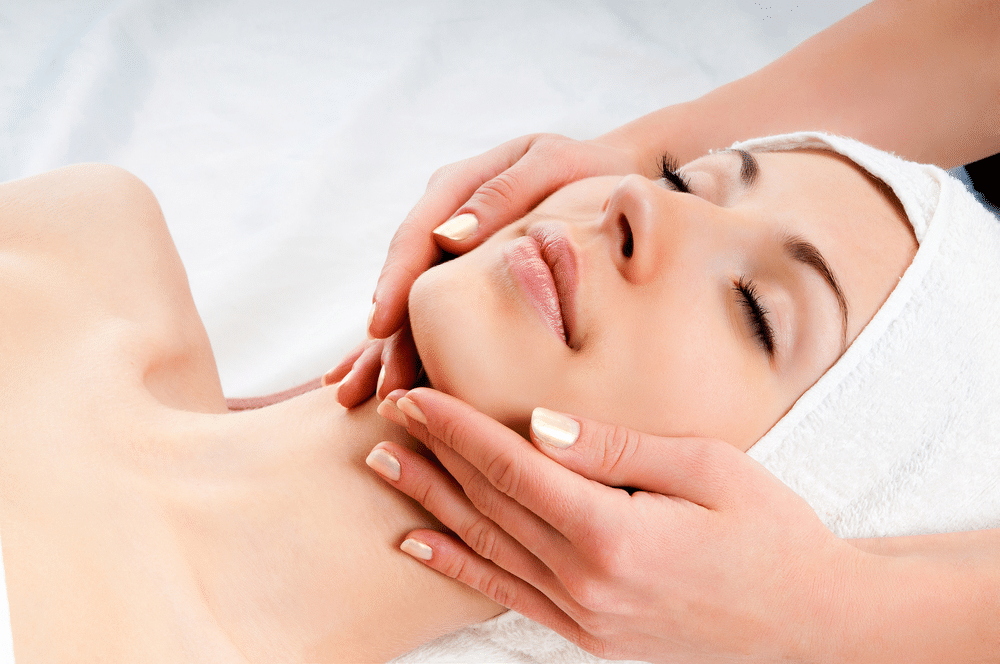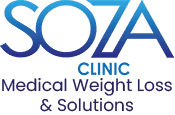The first written record we have of microneedling was of Ernst Kromayer, a German dermatologist, experimenting with dental burs of various sizes back in 1905. His experiments were fairly successful, and he treated his clients’ scars, birthmarks, and excessive redness. Today, this treatment has come a long way. At Soza Clinic in Richardson, TX, we perform this treatment with the SkinPen, the most effective device for such an occasion. If you think that micro needling really work, it’s time to read more about this article.
Does Micro needling Rea lly Work?
Yes. Microneedling really does work. We use the SkinPen device when performing this treatment, a device that has been thoroughly studied. After reviewing several third-party clinical trials, the U.S. Food and Drug Administration determined that the SkinPen device is incredibly effective for the treatment of certain cosmetic concerns.
How Does Treatment Work?
Microneedling is sometimes known as collagen induction therapy. This synonym holds the answer to how the treatment works. Treatment with the SkinPen device kickstarts your skin’s collagen creation process. Collagen is a very special type of protein that keeps your skin tight, helps it maintain an even tone and helps it remain smooth and wrinkle-free.
Which Conditions Can Be Treated With Collagen Induction Therapy?
A great number of conditions can be treated with collagen induction therapy. Back in the early 1900s, this treatment was used to correct hyperpigmentation, trauma and burn scars and uneven skin tone. Today, we know there are far more cosmetic concerns that can be corrected by this treatment. For example, it can be used to tighten loose skin, treat acne scars, erase age spots, shrink enlarged pores and smooth lines and wrinkles.
How Many Sessions Will I Need To Achieve My Ideal Results?
How many sessions you will need to achieve your desired results depends primarily on the type of condition you are trying to treat and its severity. If you’re looking to treat a severe case of scarring, you may need between three and six sessions spaced between a month and six weeks apart. If you’re trying to treat moderate-to-severe wrinkles, you should only expect to need three sessions, and pore reduction can occur after a single, short session.
Does At-Home Dermal Rolling Work?
No. Unfortunately, at-home dermal rolling does not work. At-home dermal rolling may sound appealing. After all, who doesn’t want to de-age his or her skin in the comfort of his or her home? However, the FDA has not approved any device that can be used at home. This is because there is no way for treatment to be effective, and there is no way to guarantee the safety of the treatment.
What Makes At-Home Dermal Rolling Ineffective?
There are several factors affecting the efficacy of at-home dermal rolling. The primary cause of the inefficacy of at-home dermal rollers is the size of the needles. First, the gauge of the needles is not as fine as the needles attached to the SkinPen. This means that there are fewer needles. Furthermore, the needles are duller, so you will need to push the device down harder while you’re rolling it across your skin for it to hopefully go deep enough.
This is incredibly uncomfortable. Unlike when you receive professional treatment, you will not have access to topical anesthetic cream. The best you can do is apply ice to your skin and hope your skin remains cold long enough to be numbed throughout the treatment. The secondary cause of inefficacy with at-home dermal rollers is the lack of knowledge regarding the proper technique. Finally, you may not be able to reach every area you’d like to target for treatment.
What Makes At-Home Dermal Rolling Unsafe?
At-home dermal rolling is not safe because there are too many opportunities for severe infection. If you touch the needles on the dermal roller without sanitizing your hands properly, contaminants will be transferred to the needles. When these contaminated needles pierce the outer layer of your skin, an infection is very likely to occur.
Unfortunately, sanitizing your hands before handling the at-home dermal roller and doing your best to not touch the needles is not enough to eliminate the risk of infection. An infection is likely to occur when you use the device for your follow-up treatment because there’s a very good chance that the device doesn’t get sanitized appropriately between treatments. Finally, there’s a chance that the treatment area is not sanitized appropriately before it is pierced.
How Should I Prepare for Treatment?
We will provide you with a comprehensive set of instructions regarding how to prepare for treatment during your initial consultation. Since this treatment is non-invasive, there’s not a lot you have to do to prepare, but every recommended step is extremely important.
To make your treatment session faster, we strongly recommend that you come in with a bare face if you are targeting facial cosmetic concerns. If you wear makeup or other cosmetics to your appointment, they must be removed before the treatment begins. You should also prepare for treatment by avoiding the use of certain medications, such as NSAIDs, MAOIs, topical retinoids and most prescription acne medications.
Other Things You Should Do Before Treatment
We strongly recommend that you drink half a gallon of water daily in the week leading up to your treatment session. Staying hydrated is great for your blood pressure and the health of your skin. The healthier your skin is, the sooner you will see the final results of your treatment and the better your skin will respond to treatment. Other good things you can do for your blood pressure in the week before treatment include not smoking and not drinking alcohol.
What To Do on the Day of Your Treatment
On the day of your treatment, wear comfortable clothes. You will be waiting a while for the local anesthetic to numb the treatment area, and then you have to sit through the treatment itself. Your appointment is not the time to wear your skin-tight jeans. To eliminate the risk of skin irritation from the needles, do not shave the treatment area on the day of your scheduled session.
Since you may be in our office for over an hour, we recommend eating a small healthy meal before you come in for your appointment. This provides your skin with essential nutrients to start healing immediately after treatment and ensures you are neither famished or uncomfortably full during your treatment session.
What Can I Expect During Treatment?
During your treatment session, the SkinPen device is rolled across the treatment area as even, gentle pressure is applied. The depth to which the needles must penetrate your skin and the number of passes made in the targeted area depends on the type and severity of the conditions you are trying to treat. Once we assess your situation, we will give you a better idea of what to expect during treatment.
Is Treatment Painful?
This treatment isn’t painful at all. In fact, it’s not even uncomfortable. Put your mind at ease if you’re considering this treatment but you’re not a fan of needles. Before treatment starts, a topical anesthetic is applied to your skin so it is numbed. You may feel a gentle pressure beneath your skin as the needles pierce. However, you won’t feel any pain or discomfort on the top layer of your skin.
How Long Does Treatment Take?
A collagen induction therapy session usually takes between 45 and 90 minutes. The length of your specific treatment depends on such factors as the size of the areas targeted for treatment, the number of areas targeted during a single session, and how severe your case is. For example, treating deep stretch marks affecting the thighs and lower abdomen will require more passes of the device than treating hyperpigmentation affecting the face.
It’s important to note, the dermal rolling portion of your treatment usually takes around half of an hour. A significant portion of your appointment time is waiting for the topical anesthetic to numb your skin.
What Can I Expect After Treatment?
Due to the non-invasive nature of the treatment, there will be no downtime following the completion of the session. If you schedule your appointment during your lunch break, you are free to return to work. Since we use a topical anesthetic rather than an injectable general anesthetic, there are no side effects, such as drowsiness, nausea, or diarrhea. The only effect of the anesthesia you will notice after treatment is numbness in the treatment area.
Keep in mind, your skin will be very sensitive after your treatment session, particularly to the effects of UV light. For the first 72 hours after your session, avoid tanning beds and unprotected sun exposure. If you’re going outside, whether you’re going for a bike ride around the neighborhood or you have four hours of outdoor work to do, wear a broad-spectrum sunscreen.
How Long Will it Take To See the Final Results of Treatment?
The collagen production process is stimulated as soon as the needles penetrate your skin, but you won’t see the final results of treatment immediately after your session. Rather, you can expect to wait up to two weeks to see the final results of collagen induction therapy. First, you must wait for your skin to produce healthier, more robust collagen. Then, you must wait for your skin to tighten, smooth, and improve in tone.
However, it’s not always true that you will have to wait two weeks to see the final results of your treatment. While it takes time to see smoothed wrinkles and tightened sagging skin, you can see the final results of pore shrinking immediately after your session is over.
Am I a Good Candidate for This Treatment?
We will determine whether you are a good candidate for this treatment during your initial consultation by reviewing your aesthetic goals, medical history, and current health. Typically, if you have a cosmetic concern caused by collagen loss, you want to erase acne, trauma, or burn scars or you want to rid your body of stretch marks, you will be considered a good candidate for this treatment.
However, we must still review your medical history. Signs you may be a poor candidate for this treatment include a history of keloid scars, skin diseases, like chronic plaque psoriasis or atopic dermatitis and a recent round of radiation therapy directed toward the treatment site. Furthermore, you should hold off on this treatment if you are pregnant or breastfeeding or have an open wound or sunburn at the treatment site.
Learn More About Rejuvenating Your Skin Today
Microneedling with the SkinPen device is absolutely an effective way to treat such cosmetic concerns as scars, stretch marks, and hyperpigmentation. It works by encouraging your skin to produce collagen, a powerful protein responsible for regulating your skin tone, texture, and tautness. To learn more about this treatment and how it works, please contact us at Soza Clinic in Richardson, TX right away to schedule your initial consultation.

